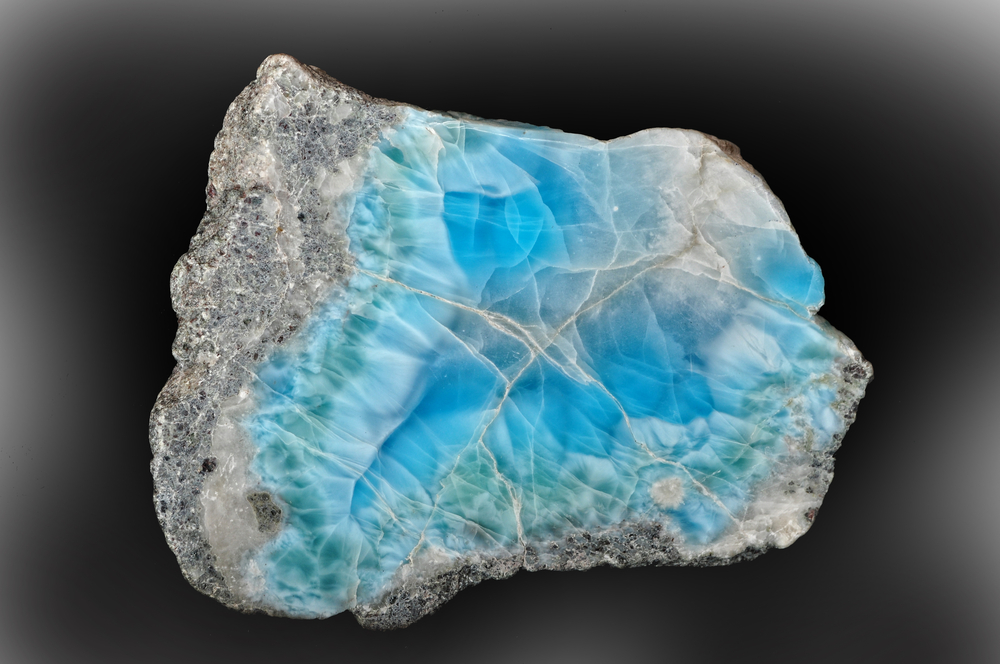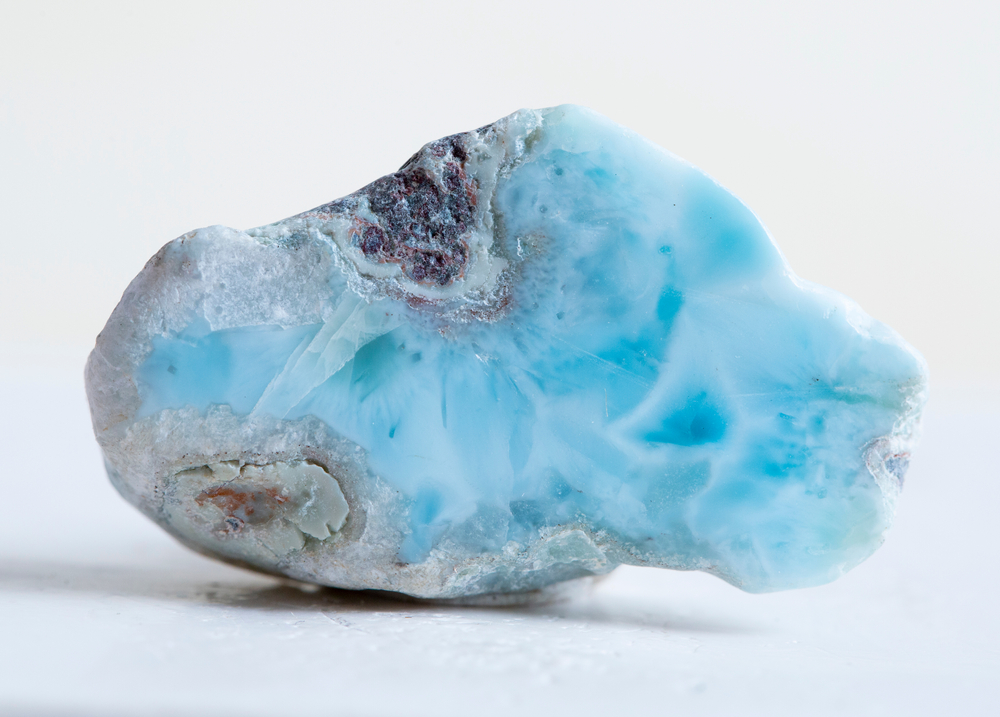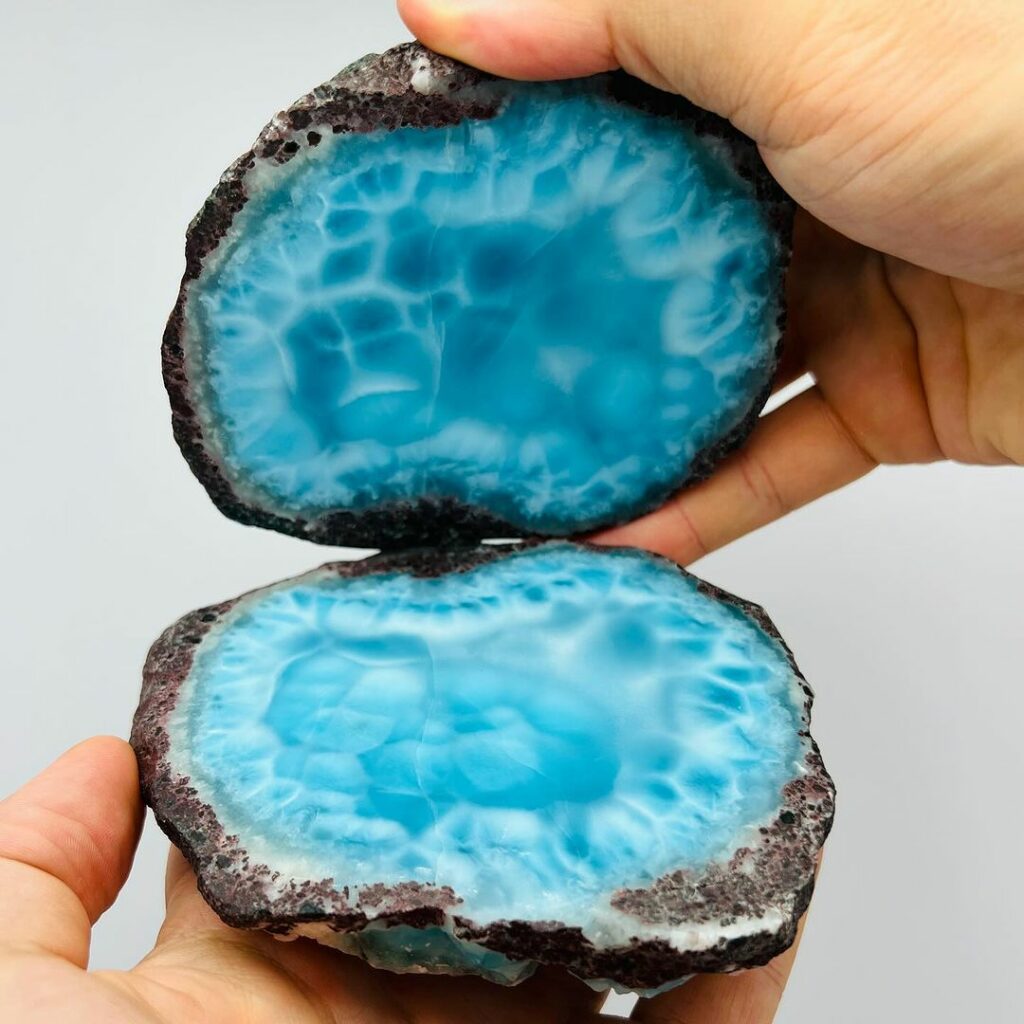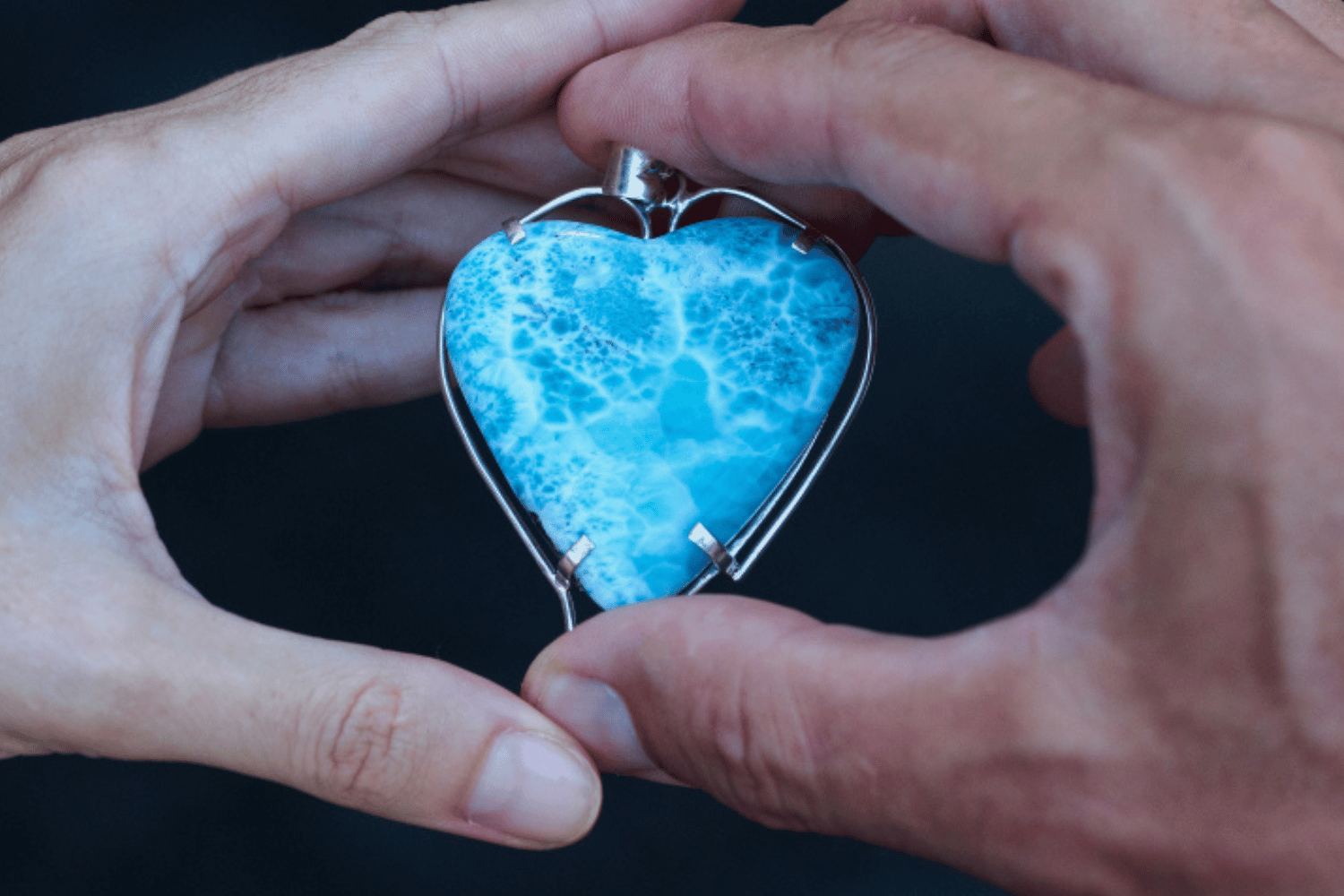Larimar, a gemstone found only in the Dominican Republic, boasts an array of deep blues and greens reminiscent of the Caribbean Sea. This rare blue variety of the mineral pectolite has captivated jewelry lovers and collectors with its unique beauty.
Discovered in the early 20th century, Larimar is formed by volcanic activity and is often associated with the embodiment of the sea and sky.

Due to its limited geographic availability, Larimar is considered an exotic gemstone. Its colors range from light blue, green-blue to deep blue, each piece offers a one-of-a-kind pattern.
This distinctive color palette is a result of copper substitution for calcium in the mineral, which influences the intensity and shade of blue.
The intricate, fibrous patterns within the stone often resemble the sun’s reflections on the ocean surface, making each piece visually striking.
Collectors and enthusiasts value Larimar not just for its aesthetic appeal, but also for the complexities involved in its mining and preparation.
Extracting this gemstone requires careful handling to preserve its delicate nature.
Cut and polished with precision, Larimar is crafted into various forms of jewelry, from earrings and necklaces to bracelets and rings, ensuring a piece of the Caribbean’s charm can be worn and appreciated worldwide.
The Origin of Larimar

The origin story of Larimar is as unique as the stone itself, forming under rare geological conditions.
Geological Formation
Larimar is formed by volcanic activity, where the crystalline structure develops when hot gases from volcanic eruptions push the minerals up through the earth’s surface.
As these gases cool, they solidify into pectolite, which gains its distinct blue color from traces of copper.
Geographical Location
The only known source of Larimar is in the Barahona Province of the Dominican Republic. It specifically occurs in the Filipinas Larimar Mine, found in the town of Los Chupaderos.
While there are stones that look strikingly similar to Larimar found elsewhere around the world, Larimar is not present in any other location, thus making it exceedingly rare and localized.
Physical Characteristics of Larimar

Larimar is distinguished by its striking blue coloration and complex mineralogy, which appeal to rock and mineral enthusiasts, collectors, lapidaries and geologists alike.
Color Spectrum
Larimar exhibits a range of blue hues, from pale sky blue to deep volcanic blue, often intermixed with green-blue shades and white to grey patterns. These color variations are the result of copper substitutions within its structure, which can be visually represented by a gradient:
- Light Blue: Often found in lighter stones, resembling a clear sky.
- Greenish-Blue: A mix of blue with hints of green.
- Deep Blue: Highly prized and rarer, reminiscent of deep ocean waters.
- White to Grey Patterns: Occur as streaks or clouds, providing a unique marbled appearance.
Mineral Composition
Larimar is a rare variety of pectolite, which is a silicate mineral. Its chemical formula is detailed as follows:
- Chemical Formula: NaCa_2Si_3O_8(OH)
- Hardness: Ranges from 4.5 to 5 on the Mohs scale, indicating a relatively soft gemstone.
- Crystal Structure: Triclinic, manifesting in needle-like crystal formations.
It’s the presence of copper within Larimar’s mineral structure that imparts its distinctive blue coloration, separating it from other forms of pectolite which are typically devoid of color.
Cultural and Historical Significance of Larimar

Larimar is not only praised for its striking blue appearance but also holds significance within Dominican culture. Its history narrates a tale of serendipity and local lore.
Local Traditions
In the Dominican Republic, Larimar is unsurprisingly associated with the sea and sky due to its color. Locals believe that this stone embodies the essence of the Caribbean Sea. Larimar jewelry is commonly worn as a symbol of national pride and is often given as a gift with best wishes for peace and tranquility.
Historical Discovery
Larimar was officially discovered in 1974 by Miguel Méndez and Norman Rilling on a beach at the foot of the Bahoruco Mountain Range. Méndez named the stone “Larimar” by combining his daughter’s name, Larissa, with the Spanish word for sea, “mar,” reflecting the stone’s ocean-like colors.
The Dominican Republic remains the world’s only source of this gemstone, linking Larimar directly to the island’s identity.
- Online rock and mineral club for collectors of all levels!
- Find community with like-minded rock and mineral enthusiasts.
- Monthly Giveaways!
- Free Access to Entire Digital Library of Products (annual memberships)


